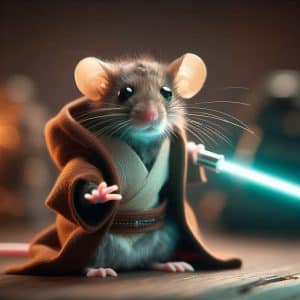
Since the 1950s, the world of animal research has been intrigued by rodents’ ultrasonic vocalisations (USVs). For decades, scientists debated the true purpose of these high-frequency sounds, which are inaudible to humans. Were they simply a form of courtship or social communication akin to birdsong? Recent groundbreaking research led by Eduardo Mercado III, PhD, a professor at the University at Buffalo, has revealed an astonishing new hypothesis: rodents might use these vocalisations not just for communication but as a sophisticated tool to manipulate their surroundings—a capability so novel it has been likened to a mouse harnessing the powers of a ‘Jedi.’
A Game-Changer in Rodent Research
Mercado’s findings, published in the journal Neuroscience and Biobehavioral Reviews, suggest that USVs emitted by rodents may create changes in the environment that influence how particles are inhaled into their nasal passages. In essence, these vocalisations could be used to cluster odour particles, enhancing the rodents’ sense of smell and enabling them better to identify friends, strangers, and potential threats.
This concept radically redefines how we think about animal behaviour. Rodents may be actively manipulating the molecular environment around them to facilitate olfactory processing—a phenomenon that had never before been considered in any species.
The Science Behind It: Vibroacoustics and Particle Manipulation
Mercado’s idea was inspired by the field of vibroacoustics, where artificially produced ultrasonic vibrations are known to cluster airborne particles. Applying this concept to animal behaviour, he hypothesised that rodents might similarly use their natural USVs to create odour clusters that aid in scent detection.
This revelation came after Mercado’s review of existing research on rodent behaviour. He found a consistent pattern: rodents often sniff immediately after producing a USV. While this behaviour was once attributed to coincidental timing or basic exploratory actions, Mercado connected the dots and theorised that these USVs facilitated enhanced olfactory processing. Therefore, the ‘Jedi’-like manipulation of their environment could be a strategic way for rodents to gather more information about their surroundings.
Why This Matters for Science and Beyond
This discovery has significant implications not just for understanding rodent behaviour but also for broader scientific research. Rodents, especially mice and rats, play a critical role in studies related to human disorders such as anxiety, autism, and schizophrenia. If rodents use USVs for purposes beyond social communication, existing interpretations of past research must be revisited.
Moreover, understanding how rodents can use sound to manipulate particles could inspire new technological advancements, particularly in environmental control and nanotechnology. Imagine harnessing this natural technique for manipulating nanoparticles—it could revolutionise everything from medical treatments to air purification systems.
What’s Next?
While Mercado’s hypothesis still needs to be tested further, it has already shifted the way scientists view USVs. As research continues, we may see further confirmation that nature’s ‘Jedi’ rodents have pioneered a form of environmental manipulation that humans have only recently begun to understand.
The findings challenge researchers to think beyond established norms, inspiring a re-examination of the evolutionary drivers behind animal communication and sensory processing. Just as studying the eyes of nocturnal creatures paved the way for night vision technology, understanding these ultrasonic capabilities could open doors to innovations we’ve yet to imagine.
Conclusion
The discovery that rodents may be using USVs to shape their environment and enhance their sense of smell redefines our understanding of animal intelligence and communication. As Mercado aptly put it, “It almost seems like magic.” This new perspective on rodent behaviour offers a fascinating glimpse into the unknown capacities of animals, reminding us that nature often holds solutions to problems we never thought to ask.

